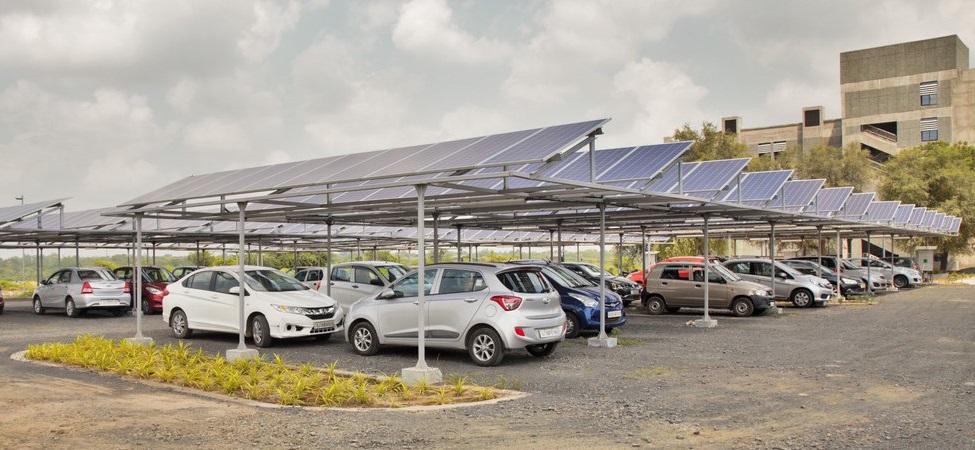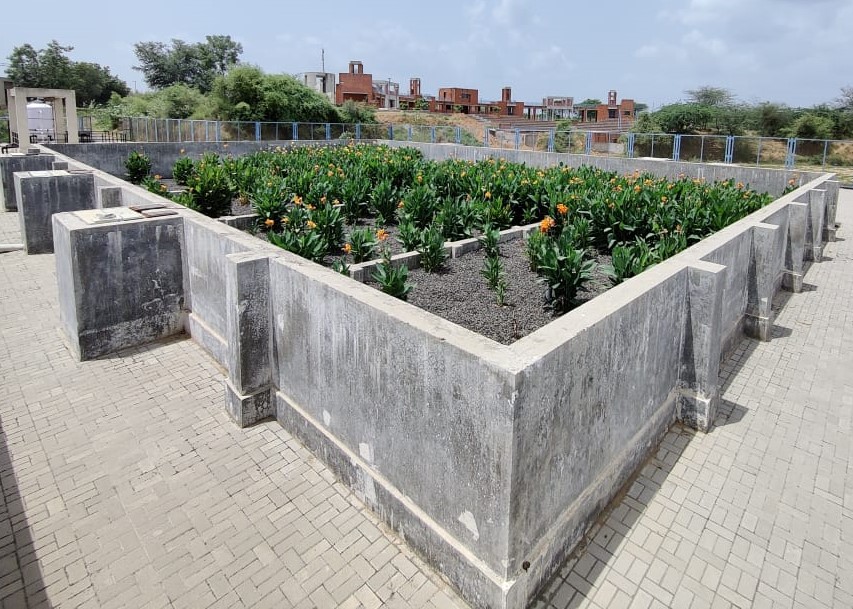GREEN IITGN
The IIT Gandhinagar campus is the first in India to receive the 5 star GRIHA LD rating for its eco- friendly and sustainable design. The IITGN campus strives to be a “living laboratory” on sustainability.

The IIT Gandhinagar campus is the first in India to receive the 5 star GRIHA LD rating for its eco- friendly and sustainable design. The IITGN campus strives to be a “living laboratory” on sustainability.

Installation of Passive Downdraft Evaporative Cooling (PDEC) technique in student dining halls using a mist pump. It has been adopted very effectively and helps reduce indoor temperature with minimal energy consumption.

Solar photovoltaic panels have been installed on the rooftops, and a solar carport has been built near the Academic Complex. A solar walkway (covered with solar PV panels) connecting the academic and hostel blocks harvests solar energy and improves the microclimate. All the residential and hostel buildings have solar water heaters/ units installed on their rooftops. Solar panel installation, use of louvres and skylights for maximum daylight utilization is being considered for various buildings in the campus. Currently, the installed solar PV capacity is 500 kWp (190 kWp at academic building’s roof, 120 kWp at student hostels roof and 190 kWp of solar carport), which provides about 10% of the total energy demand of the campus.

Rainwater from rooftops throughout the campus is collected and stored in large underground tanks placed strategically across the campus for rainwater harvesting, called Jal Mandaps (water pavilions). This water is piped to the Water Treatment Plant, where it is treated and mixed with the Narmada Canal water.

The campus uses an innovative sewage treatment system, called a Decentralized Wastewater Treatment System (DEWATS), which features root zone treatment of the sewage. The wastewater is piped to the Sewage Treatment Plant (STP). It is treated by feeding the collected waste to a bacterial mass that converts the decaying matter into stabilized basic water, carbon dioxide and mineral-rich residue. This process is completed by passing the effluent through a settlement tank, an anaerobic baffled reactor including anaerobic filters, and through the roots of Canna indica in a process known as root zone treatment. The resulting treated water is primarily used for irrigation purposes.
In addition to the direct benefit through saving the operational cost of the sewage treatment system, further advantages in this technology include lesser carbon footprint due to lower power and chemical consumption and hence, can be termed as a ‘Green STP Technology’. The technology reduces the demand for freshwater supply and the city’s treatment system load.

As part of IITGN’s waste management initiatives and to minimize waste going to the landfill, the campus built a biogas plant to process the wet food waste (coming primarily from the hostel mess). Based on technology developed by the Mumbai-based Bhabha Atomic Research Centre (BARC), this biogas plant generates electricity from organic waste and slurry with no other by-products. However, as the biogas plant has not been running as reliably as hoped, campus planners are now more reliant on the composting pits.